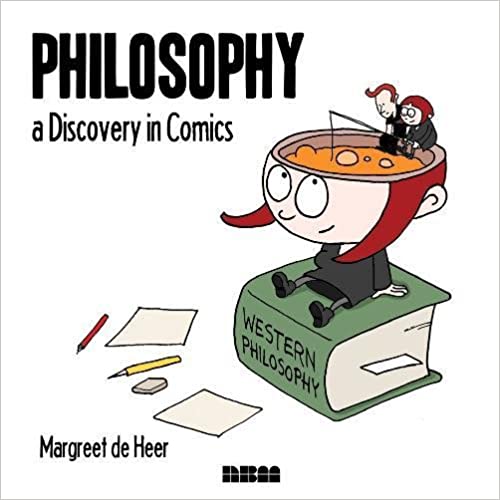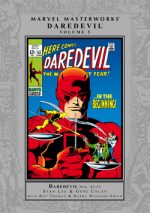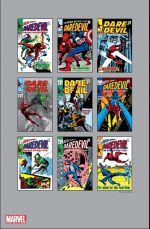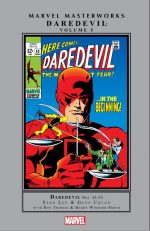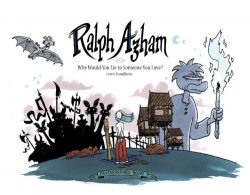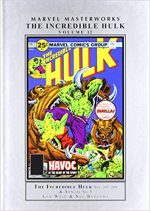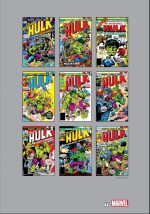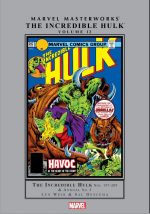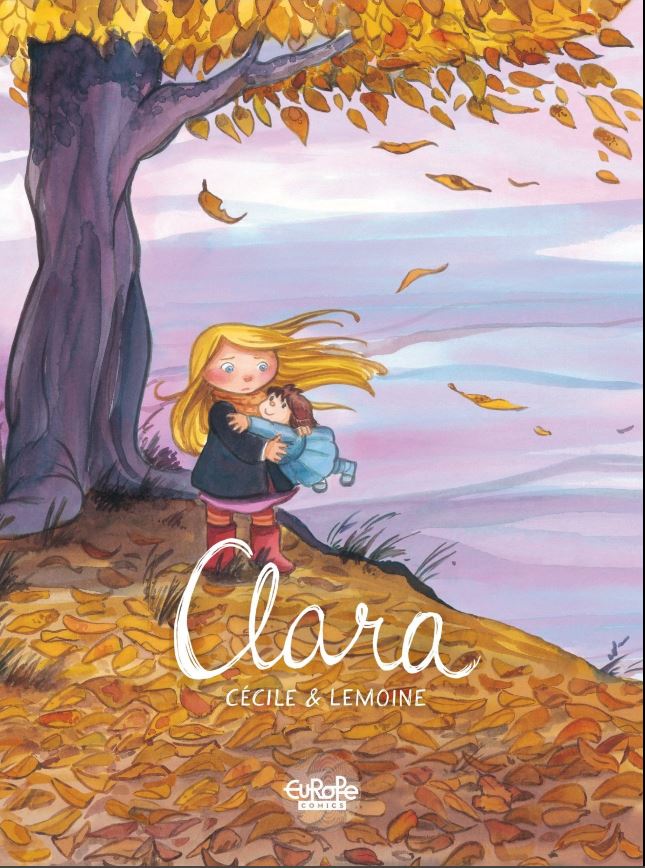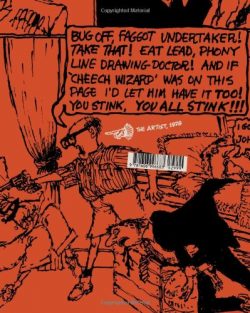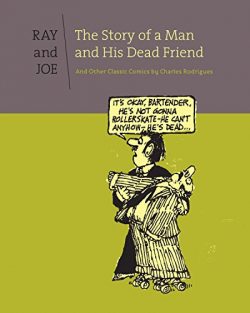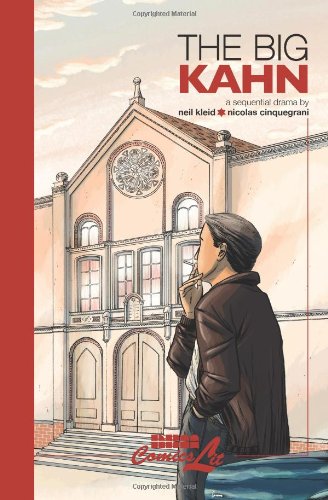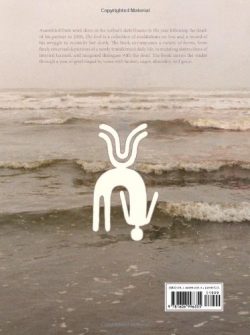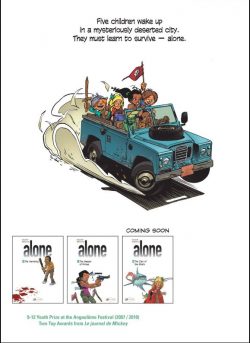
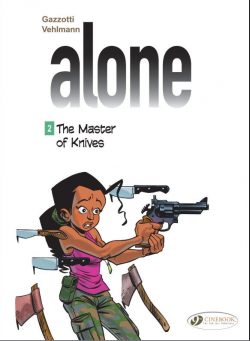
By Gazzotti & Vehlmann, translated by Jerome Saincantin (Cinebook)
ISBN: 978-1-84918-206-5 (PB Album)
Fabien Vehlmann was only born in 1972, yet his prodigious canon of work (from 1998 to the present) has earned him the soubriquet of “the Goscinny of the 21st Centuryâ€. He entered the world in Mont-de-Marsan and grew up in Savoie, studying business management before taking a job with a theatre group.
In 1996, after entering a writing contest in Le Journal de Spirou, Vehlmann caught the comics bug and two years later published – with illustrative collaborator Denis Bodart – a mordantly quirky and sophisticated portmanteau period crime comedy entitled Green Manor. From there on, his triumphs grew to include – many amongst others – Célestin Speculoos for Circus, Nicotine Goudron for l’Écho des Savanes and a stint on major-league property Spirou and Fantasio…
Bruno Gazzotti is Belgian, born in 1970 and a former student of Institut Saint Luc in Liège. Another artist addicted to comics from his earliest years, he started getting paid to draw them in 1988, after being hired by Spirou editor Patrick Pinchart on the strength of his portfolio alone. Before long he was illustrating Le Petit Spirou with Tome & Janry.
In 1989, he and Tome created New York Cop Soda, which kept Gazzotti busy until 2005, when he resigned to co-create award-winning feature Seuls…
Originally released in January 2006, Seuls – La disparition began a superb example of how to craft a thriller suitable for kids: evoking the eerie atmosphere of TV series Lost and the most disturbing elements of Philip Wylie’s The Disappearance and William Golding’s Lord of the Flies. In a post-virus, Lockdown-besieged world, it also has eerie echoes of how humans deal with enforced isolation…
Debut volume The Vanishing showed us how an ordinary bustling town, with simple folk going about their business overnight became an empty mausoleum, with a small cross-section of kids left behind to survive or die.
The scant remainers comprise Ivan, an imaginative child of wealth who wants for nothing but never saw his dad and Leila, a born engineer, inventor and tinkerer. Her poor but honest dad always found time to play and critique her latest gadget…
Studious Camille was over-focussed on exams and achievement whilst Terry is pretty much still a baby: refusing to obey orders and throwing tantrums if he doesn’t get his way.
Typically, even in an ideal environment, not all children lived comfortable lives. Dodzi was in the protective services system. His early life made him tough and resilient but couldn’t stop the other young inmates handing him a beating on this ominous, odd-feeling night before everything changed…
When it happened, the kids wandered a terrifyingly quiet and forbidding city until finding each other. All the adults were gone, and all their child pals. The internet was down, with only static from TVs and radios. Above, fearsome storm clouds hung low and ominous. As they went wild with freedom and panicked from anxiety, eventually Dodzi brutally enforced calm and lead them away to find a succession of temporary – albeit palatial – refuges to regroup and think… After an uncanny series of encounters with escaped circus animals, the little band settle in the towering Majestic Hotel and Master of Knives (originally released as Seuls: Le Maître des couteaux) opens with Dodzi scouting the empty metropolis and helping Leila consolidate supplies for a long stay in the lap of luxury. His nervousness remains high as there are still close calls with the liberated beasts in the streets, but the younger kids seem to have adapted well. It certainly helps that they are hoarding every toy and treat they can find in abandoned shops and houses…
Ivan has a plan to occupy him too: systematically calling every phone number in the phone book. No luck yet, though…
Things start to go south swiftly after he finds his father’s pistol and tempts Leila into a spot of target practice on the roof. As Dodzi furiously confiscates the lethal toy, he has no idea that he has become the chosen prey of a mysterious stalker. As the cloaked pursuer slowly enacts a chilling campaign of terror, the stressed leader agonisingly discovers he is not the only obsession of the terrifying, nebulous figure clad in cloaks and draped in blades and daggers…
As the other kids obliviously fritter away the day, Dodzi is remorselessly hunted over the rooftops by the manic killer. When he briefly eludes the hunter, the Master simply doubles back to menace the children in the hotel. A shocking confrontation then ensues, which sees the tables turned but only at the cost of Dodzi’s closely withheld secrets being exposed to all…
In the painful aftermath, the days of innocence are discarded and the little orphan family prepare to hit the open road to find out if other cities have been emptied too…
To Be Continued…
This spooky, powerful and often shocking tale of mystery and imagination sees bereft children facing increasingly daunting physical hazards and an escalating series of events which can have no logical or rational explanation, and the tension simply amplifies with every instalment. Alone became one of the biggest critical and commercial comics hits of the decade and if you love eerie enigmas and powerful tale-telling, you’ll buy this and successive releases to see why…
© Dupuis 2007 by Gazzotti & Vehlmann. All rights reserved. English translation © 2014 Cinebook Ltd.

